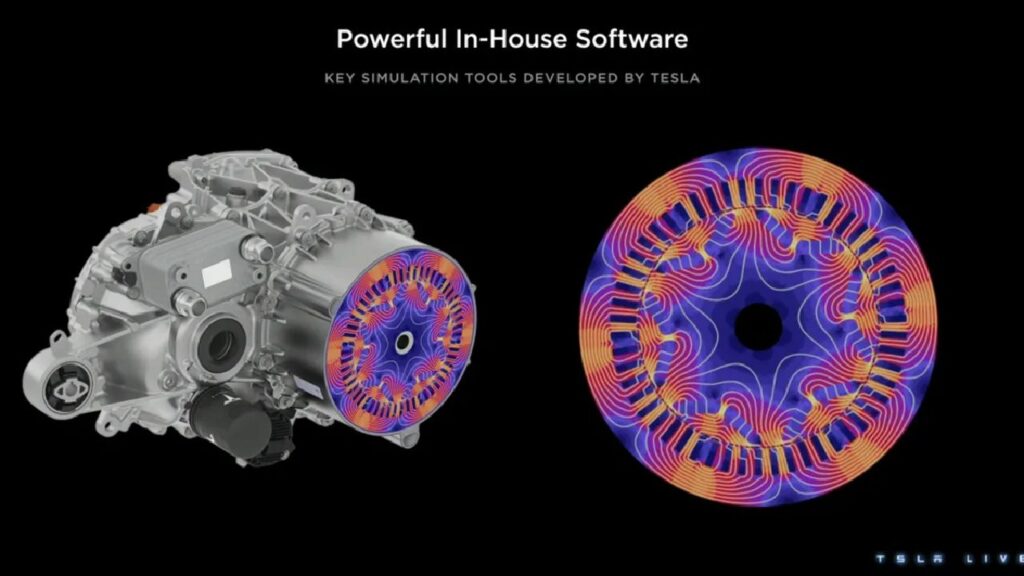Tesla announced that it will make a Permanent Magnet Synchronous (PMS) Motor for its next-gen EVs (electric motors) without the rare earth elements. Interestingly, Tesla started making EVs using AC Induction Motors which didn’t contain any rare earth elements almost a decade ago. Rare earth elements include Lanthanides along with Yttrium and Scandium. PMSM primarily uses Neodymium. Also, most rare earth elements are found in China.
However, after the arrival of Model 3, it introduced a new Permanent Magnet Motor which contained rare earth elements. In fact, between 2017 and 2022, Tesla was able to reduce the rare earth elements usage by 25% in the Model 3 drive units.
You might also like: Qualcomm Plans to Dominate the Future of Electric Cars

You might also like: Kia EV9 Electric SUV Partially Revealed Via Official Teasers
Permanent Magnet Synchronous Motor (PMSM)
As the name suggests, this kind of motor consists of a permanent magnet which creates rotating magnetic fields in the rotor and stator. Both these components of the electric motor are in sync and there is no slip which is where the name comes from. They have high power density, high efficiency (~95%) and need low cooling. But these tend to be slightly more expensive and use rare earth elements. There is also a theoretical danger of demagnetization.
You might also like: Does the Future of EVs Rest on Sodium Ion Batteries?
However, Tesla aims to completely eliminate the use of rare earth elements in their next generation of electric motors. It has always been at the forefront of technological advancements in the EV space. In fact, its technological superiority for over a decade is what makes it the biggest EV maker in the world.
At the Investor Day ceremony, Tesla compared the parameters of the rear earth elements usage in its existing Model Y permanent magnet motor with this next-gen motor on which they are working. While technical details were not revealed owing to the fear of letting the secret out but we suspect that Neodymium, Dysprosium and Terbium are the three rare earth elements that were being discussed during the presentation.
You might also like: Top Solid-State Battery Companies For EVs
Substitute for Rare Earth Elements
Now, the rare earth elements are not only being used in the permanent magnet motors for EVs but also in various other electronic gadgets including speakers, hard drives, screens of smartphones, computers, new-gen light bulbs, flat panel televisions, etc. But there has been research going on regarding the alternatives to these elements for quite some time now.
This includes materials like Ferrites (Iron Oxide with Barium or Strontium additives), AlNiCo (Aluminium-nickel-cobalt alloys) and Samarium Cobalt. Most of these materials and techniques are not in the mass-production phase yet. But there are also concerns about the use of Nickel and Cobalt for various reasons which is an issue in the Li-ion batteries too. So, it will be interesting to see how Tesla is able to deliver on this promise of using a PMS Motor without rare earth elements for EVs.
